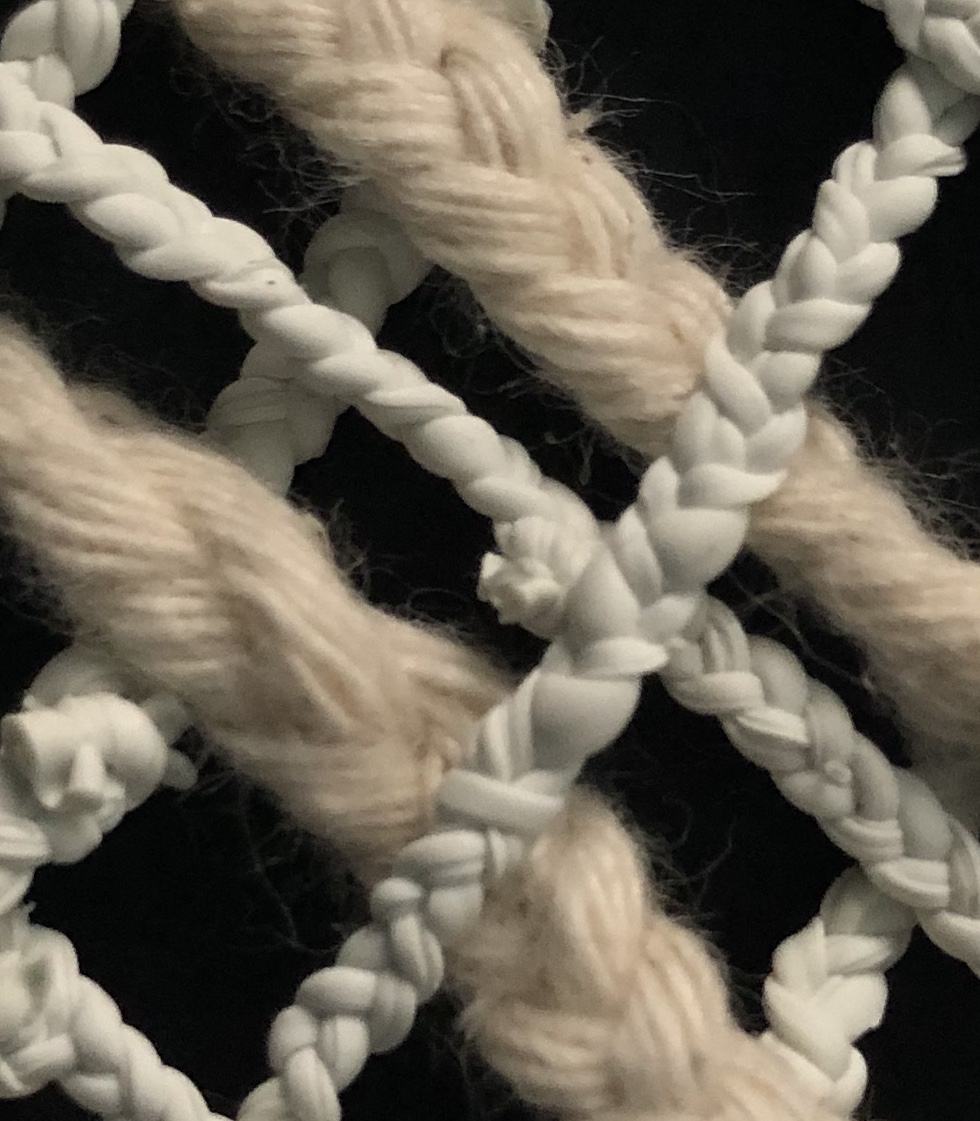
Before experiencing Sarah Lawrence I had never taken an art class or pursued my interest in creative endeavors. I confined myself to things I knew I was good at such as sports and school work. Refusing to step outside of my comfort zone, I happily stagnated in this realm of security; ignorantly allowing myself to stay the same. Arriving at Sarah Lawrence was like being dropped into the ocean- it was time to either sink or swim and I desperately wanted to succeed. Again, I played sports and worked hard in my classes, but something had changed. I was no longer surrounded by people who would allow me stagnate. Their desires to grow encouraged mine, and my goals changed. The goal was no longer simple success, but now personal growth. Staying the same wasn’t good enough; I wanted to become more than what I had been in highschool. I studied subjects that I never imagined I would, joined the basketball team- a sport I had never played- and took an art class. From each of these endeavors I ignited new passions that have helped me on my journey towards growth, but the latter has been my favorite. During my time in Drawing Machines I have chipped away at my tendency towards perfectionism and replaced it with an interest in the “flaws” of my art. My conference work is the child that was born from my desire to grow as a person and artist.
When I began this project I knew that I wanted to build a drawing machine of some sort. Upon discussing this with my professor she suggested that I build a harmonograph and pointed me in the direction of Karl Sims. Studying computer graphics and life sciences at MIT, Sims indulged his interest in designing an artificial world with artificial organisms. Later, he became famous for this work, “Evolving Virtual Creatures” (1984), and a later project called “Partical Dreams” (1988). Similarly to me, however, Sims wanted to explore working with physical materials and the result was his “Three-Pendulum Harmonograph”. His design informed mine and my research into the inner-workings of a harmonograph commenced.
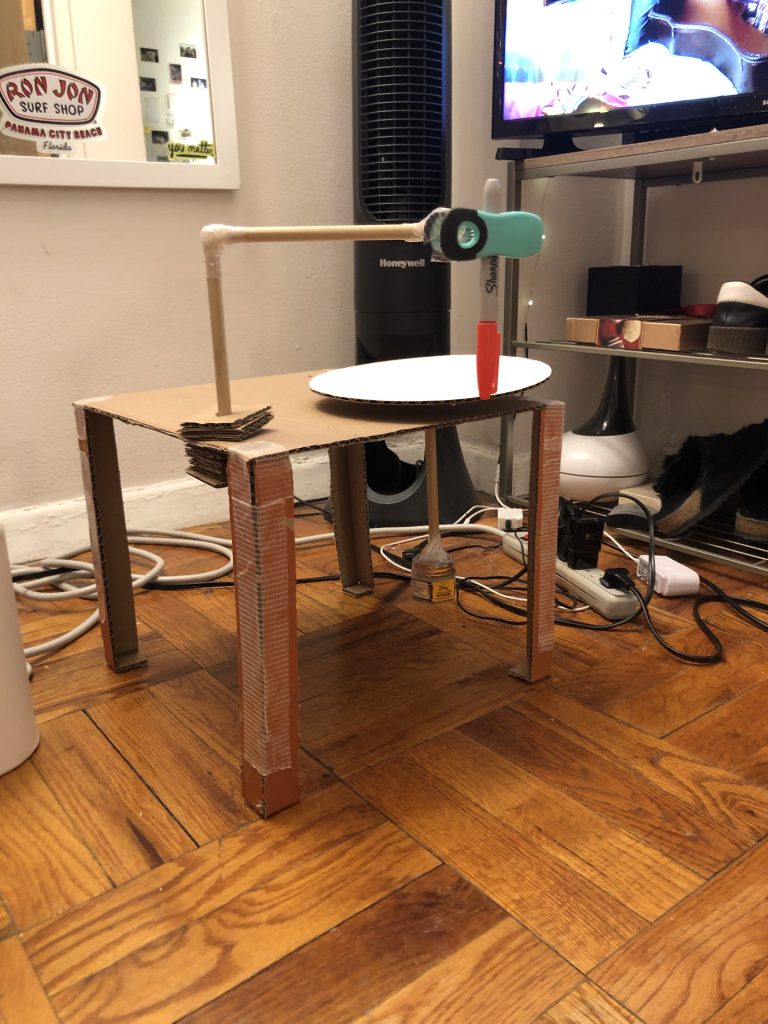
My first draft was a bit of a disaster. Relatively small, the arm holding the table top did not have enough space to swing properly. Further, when the arm did swing it had the potential to fly off at any moment because of the fragile design. Standing a measly one foot off the ground, there were many “flaws” in the design. The table, where the drawing would be produced, sank because of the weight that made it swing. The arm holding the pen was too inflexible and created a straight line that lacked the complexity of the drawings produced by Sim’s machine.
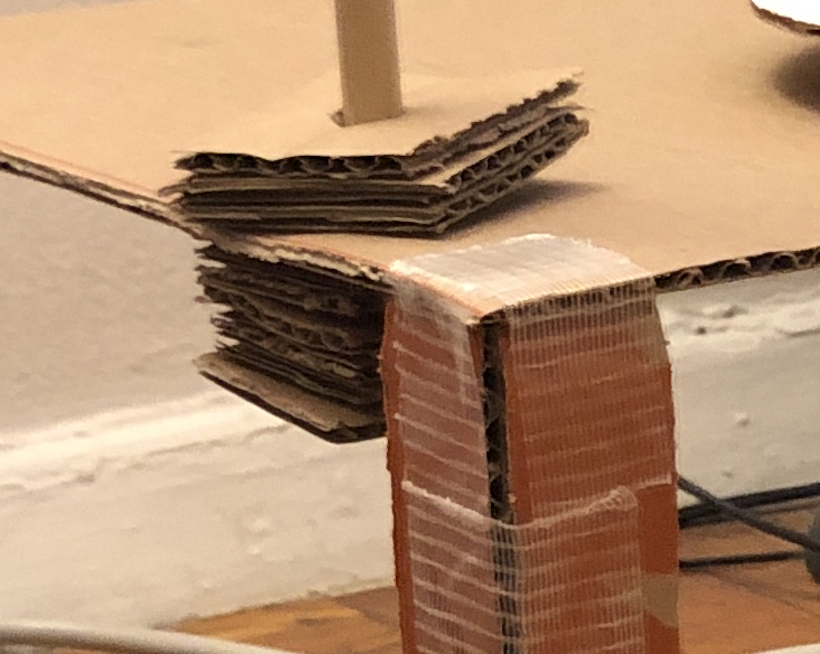
As you can see the materials used in design included a container of Tiger Balm and a clip my roommates used to keep bags of chips fresh. The legs were held together with duct tape and could hardly be considered stable. The many faults, however, were accompanied by interesting features. The most persisting of these was the choice to stack cardboard in order to stabilize the arm. I used this method continuously throughout the creation of my drafts.
The second draft of my project was similarly flawed. I made improvements to the design such as shifting the swinging pendulum from the table to the arm holding the pen. I also improved the durability of the gimbal- the feature that allows the arms to swing while remaining sturdy. Thoughout repeating this process I learned about the mechanics of a gimbal as well as observed the points of friction and resistence.

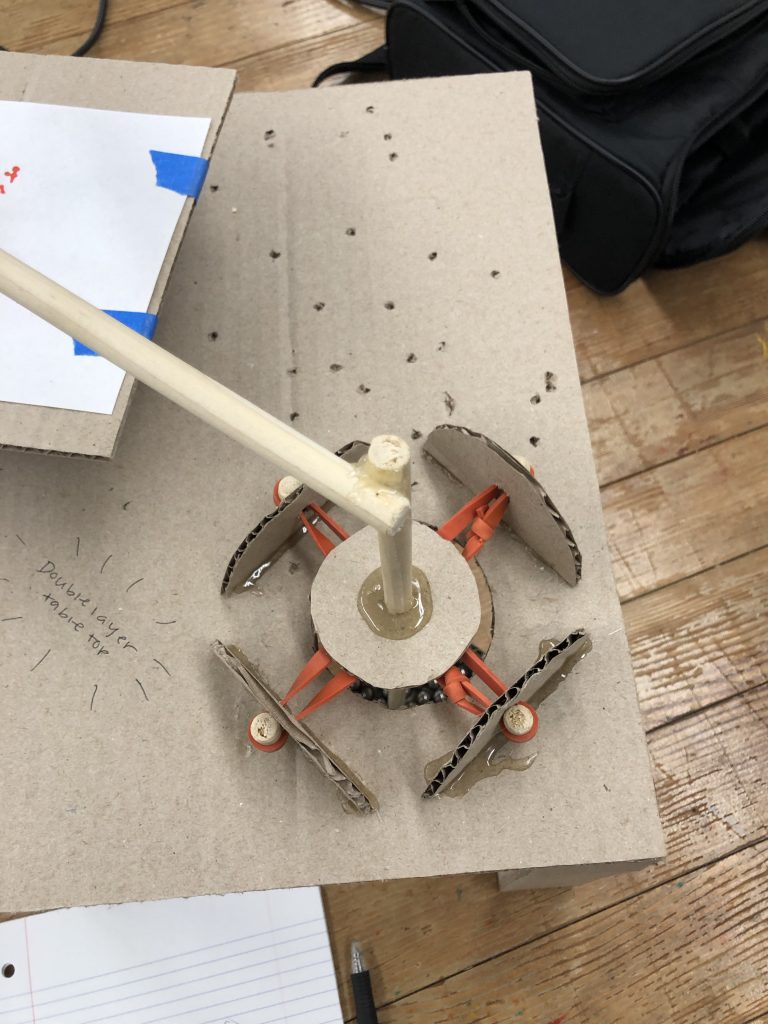
Additionally, I was able to observe the effect that weight and excess motion have on the drawing produced by the machine. Once again, the result was a straight line. Overall, the second draft of this project was very similar to the first. I was able to revise some aspects, but I required more experience working with the materials and I needed to think about the design more flexibly. From the flaws of this draft I learned that I needed to reduce excess motion, add another arm to steady the pen, and identify a material that could be better used as weight for the pendulums. My solution to reducing excess motion in the base was to create sturdier legs and double the surface width- a concept that became reality in my third draft.

The third time I tried to build a harmonograph was interesting, because unlike its predecessors, this draft was built in my childhood bedroom. In the midst of the coronavirus pandemic I ventured out of my house to buy the materials I needed to continue working on my project. Upon returning home, I began to make the revisions and necessary additions that I had identified during my second draft. I started by solidifying the base, so that this third version would be more stable and the excess motion would be reduced.
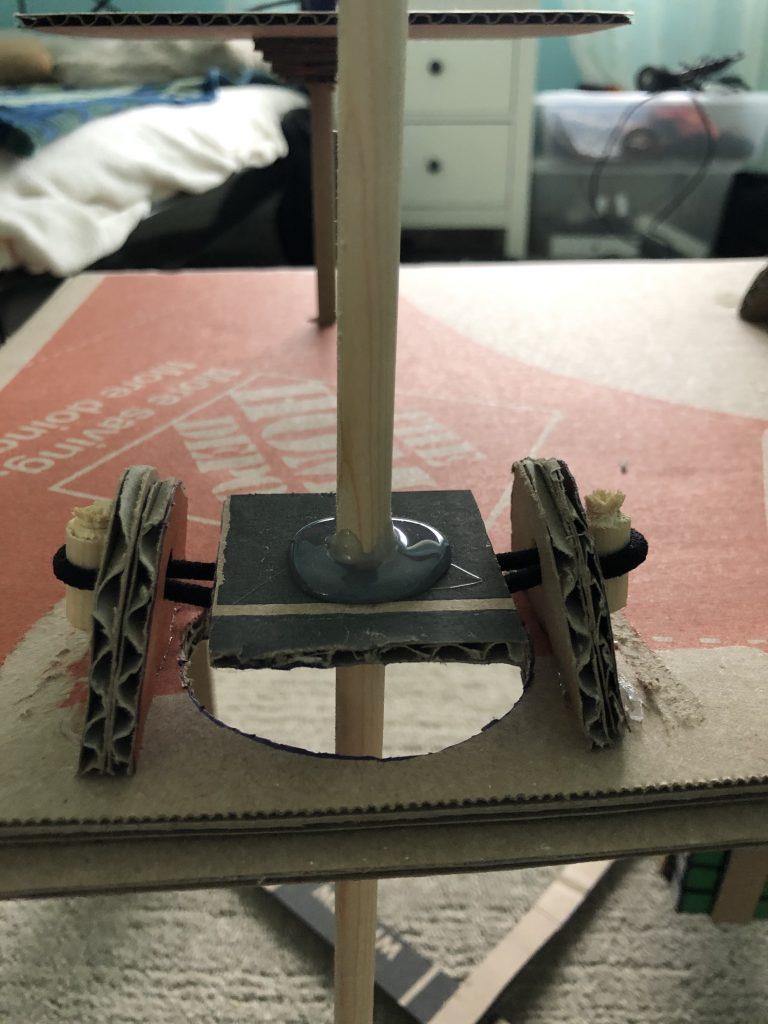
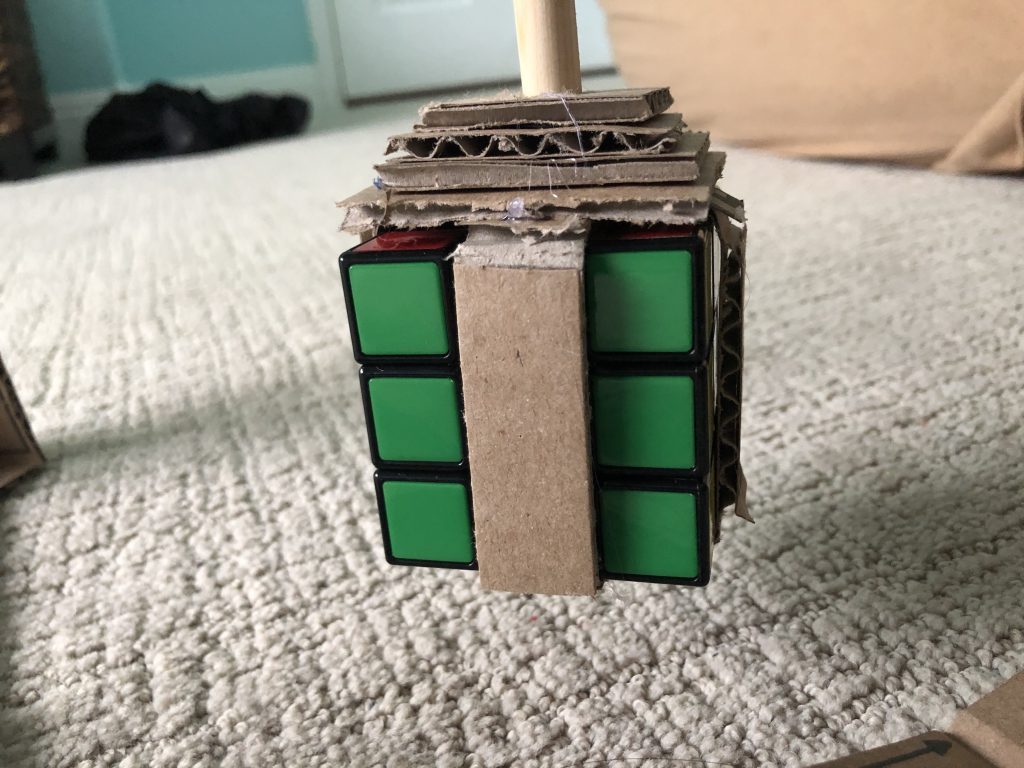
I also made it 1.5 times bigger so that the arms of the pendulums would have ample room to swing with their new weights. The Rubix Cubes I had laying around my room were a great weight for the pendulum; I would have preferred something heavier, but considering the circumstances they were a great substitution because of their shape and size. I created a cradle to hold each of the Rubix Cubes that would swing my arms and reconfigured the gimbal so that motion would be less restricted. This process was interesting because while I needed to reduce motion in some places, other areas of the machine required maximum flexibility. I could feel myself getting closer to an ideal project, but I was still producing straight lines (although the third draft created something of a cross with its two arms). I needed to make another round of revisions.
With the fourth version I was finally able to produce a spiral. The drawing was a direct result of the new additions and changes I made in my final draft. Although I added a third arm and solidified the base in this final version, the real stars were the design features that I had added after many failures.

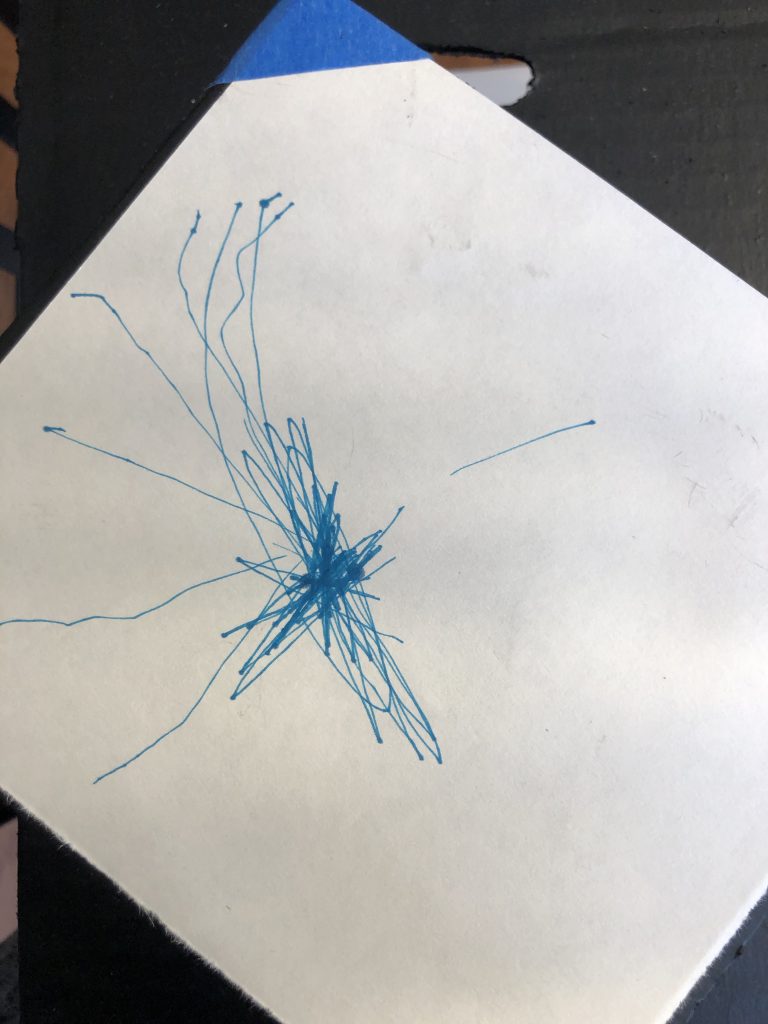
Like the previous drafts, this harmonograph used the gimbal design I had created after trial and error. It utilized the same cradle that I had used in my previous draft after hours of searching for a suitable weight. With a sturdier base, the machine was finally able to rid itself of the enormous amounts of wasted motion. Adding a third arm, I had finally reached a three-pendulum harmonograph- the same as Karl Sims- and to my delighted surprise, it worked. The addition of another arm led the pen in a circular motion that created thin spirals on the blank canvas. At long last, I had achieved my goal and my project was finished.
Overall, my biggest takeaway from this process is this: similarly to the many mistakes that it takes for a person to grow, this machine was born from failure after failure. It was by trying and failing that I was able to learn so much and that the project eventually succeeded. As an artist, and person, I look forward to my next failure.

